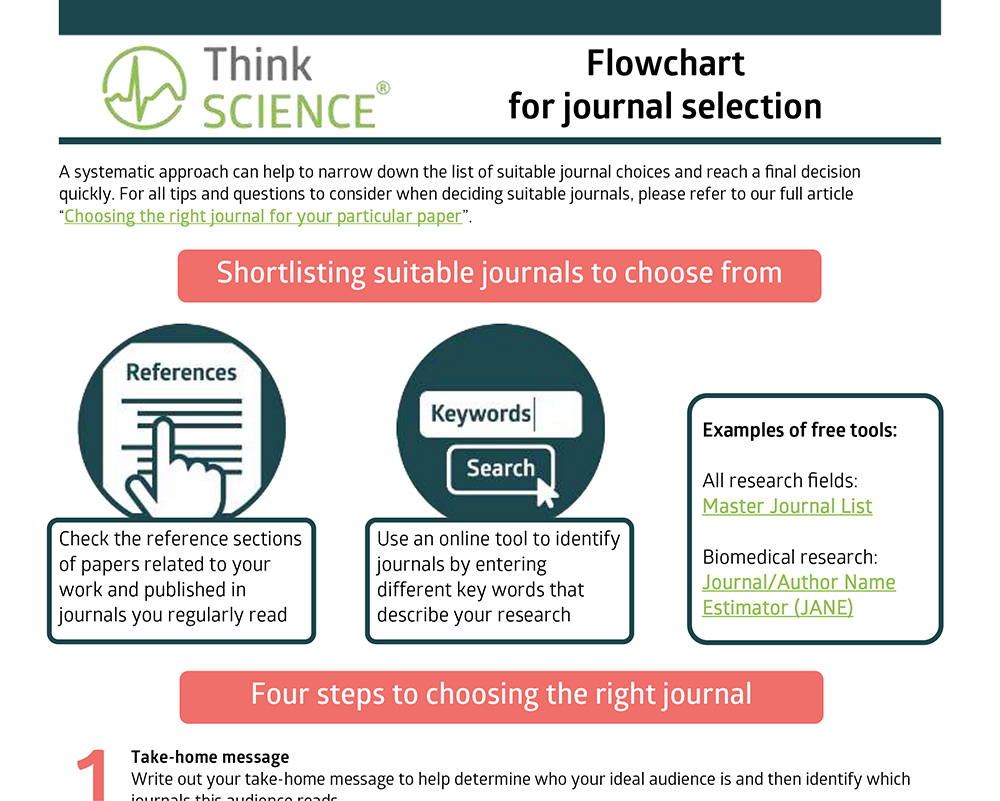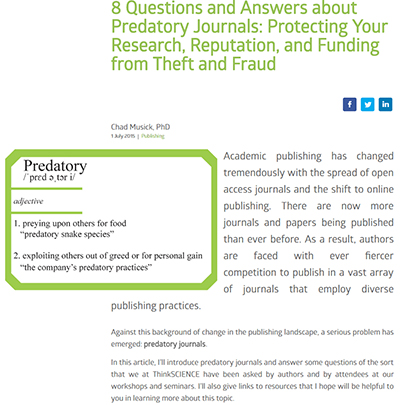Which audience do you want to reach?
Check your take-home message and write down who would really benefit from knowing your research findings; in other words, write down who your ideal audience is.
- Which audience would benefit from reading your work?
- A general audience (i.e., those reading a transdisciplinary journal, such as Science or Nature)?
- A more specialist, multidisciplinary audience (e.g., New England Journal of Medicine and Journal of the American Chemical Society)?
- A single discipline audience (e.g., Topology)?
- A highly specialized audience in a subfield of a single discipline (e.g., Journal of Knot Theory and Its Ramifications)?
- Would an international, regional, or national audience be the best fit?
- An international audience is not always the best target for your message. Maybe a regional or domestic audience would find your message more valuable, especially when geographical or cultural factors are involved in the research.
- Language: Do you need translation to reach a key audience? Do you need language support to write a paper in English? Can you get that support, and do you have funds available to pay if you can't get it free of charge?
- Related to the next question about access: If your target audience includes authors from less affluent countries, open access publishing can be a good option because it will be free for readers to access your published article. Open access publications can reach wider audiences – but how wide an audience do you actually need?
Do you want open or closed access to your published paper?
For brevity, only the main characteristics are stated; variations exist within each type.
Open access: Readers (and their institutions) pay nothing to read the paper. The author may pay an article processing charge (APC).
Closed access: The author does not pay to publish because the publication fee is covered, either by academic society membership fees or by individuals/institutions paying for reading access.
Some funding bodies who award research grants stipulate that the resulting research papers must be published in open access journals only. If your funding body does not stipulate open access, then you must decide whether to target a journal with open or closed access (or a hybrid journal which offers both types of access). Debate continues over whether open access actually achieves higher citations (see, for example, here and here), and the prestigious journals of many academic societies have closed access, where articles are published behind a pay-wall.
- Does your funding body (if you have one) stipulate open access publications?
- Do you have enough research funds to pay the APC if you want open access?
- Does the audience you want to reach tend to read closed or open access?
Do you need quick publication?
You might want a quick publication if you think your results are valuable to the community and warrant quick dissemination, or you might need a publication quickly for career/employment purposes. Some journals have fewer submitted papers than others and may be able to publish accepted articles more quickly, and some popular journals have a fast-track route for important papers warranting rapid publication. If you want a quicker publication, then some regional and national journals don't have as many submitted papers waiting to be reviewed as international journals do—if the journal editor thinks your paper is a good match for the journal, your work might enter peer review more quickly than at international journals and, if accepted, it could enter the publication queue more quickly.
- Does the journal fast track submissions for original articles?
- If the journal you prefer doesn't accept fast-track original articles, does it accept short/brief communications? Would it be a good choice to write up your research as a short/brief communication?
- Does the journal's website give the average time from manuscript receipt to first decision (reject or enter peer review), time until final decision, and then time to publication? Or can you see from scanning published papers what the average times might be from "Received", "Accepted", and "Published" dates, which indicate the time taken for peer review and publication?
- How many issues does the journal publish each year? Does the journal publish regularly, when planned? Does it publish continuously online?






